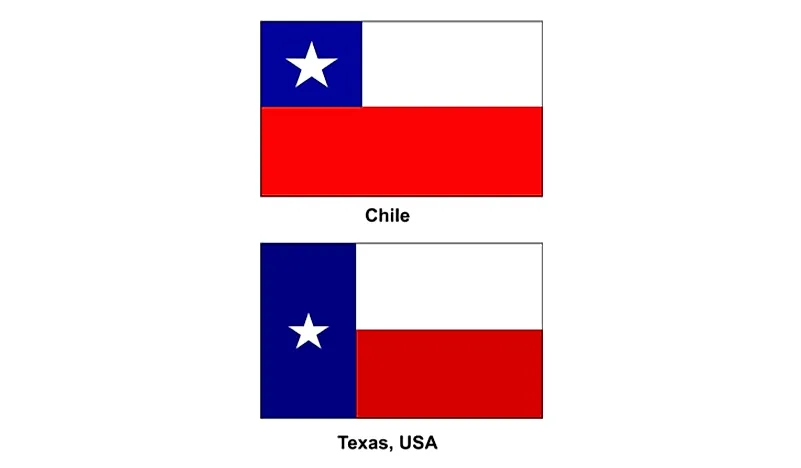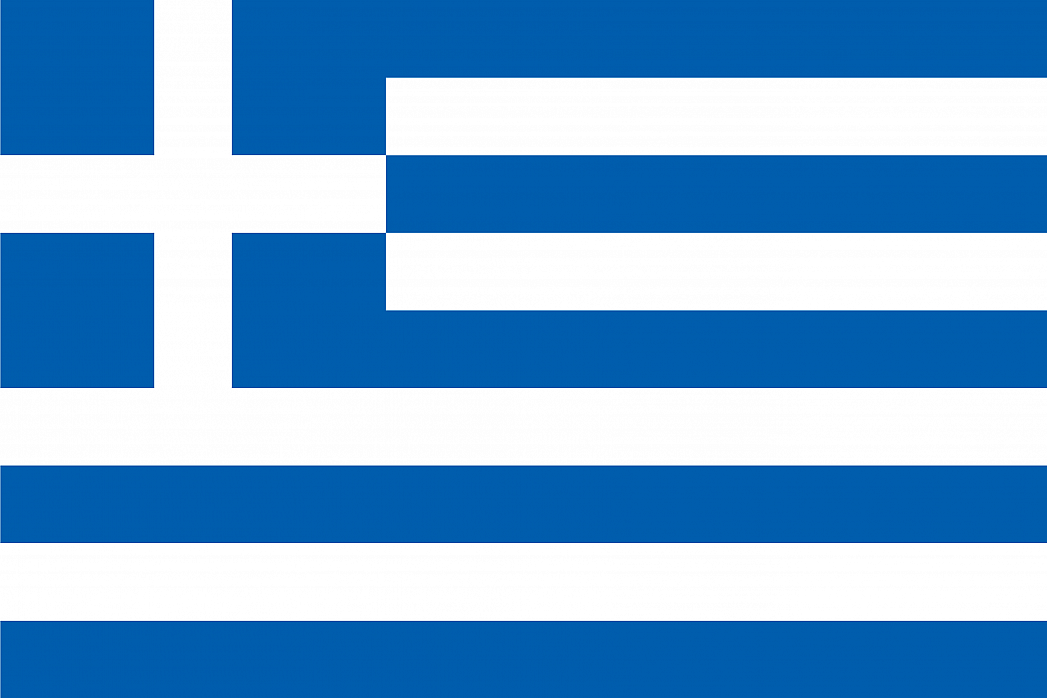The Greek national flag is easily recognizable from its blue and white colors. The flag has nine alternating blue and white stripes of equal width which run horizontally. There is also a blue square on the upper left corner with a white cross within. The officially accepted ratio of the flag is 2:3. The country adopted it on December 22, 1978, at the beginning of the Third Hellenic Republic. The flag first made its appearance in 1822. This meeting was a political gathering which declared independence from the Ottoman Empire during the Greek Revolution.
Although there is no shade of blue that has been officially issued for the flag, it is considered to stand for the sky and sea which symbolize limitless opportunities. The white is for the clouds and the waves in the ocean which in turn represent continuous progress. The cross represents the Greek Orthodox Church which has deep roots in the country. Opinion varies on the meaning of the stripes. One version says that they are for the nine letters of the Greek word for freedom and another maintains that they stand for the syllables of the Greek phrase "Freedom or Death" which was the war cry of the Greek rebels during the war against the Ottomans.
The current design of the national flag was first officially detailed in Decree Nr. 540 of the Provisional Government on March 15, 1822. The use of the white cross on a blue field was surprising as the most commonly used flag by military leaders during the uprisings of 1769 which led to the War of the Independence, was a blue cross on a white field. Yiannis Stathas was one of the few military leaders who used the former design on his ship.
The government decree of March 15, 1822, also specified that the national flag would be a white cross on a blue field, while the current cross and stripes flag was to be used for the naval ensign. In 1832, all military flags had a coat of arms added to the center of the cross. After King Otto abdicated his throne, the coat of arms was replaced by a crown in 1863. During the Second Hellenic Republic, the crowns were dropped only to be reinstated shortly after in March 1822 after the Monarch overthrew. The crowns were finally removed in 1967 after the Greek Military Junta staged a successful coup d’état. It was not until 1978 that the design which had previously been used for the naval ensign was adopted as the national flag to be used on land as well as at sea, thereby replacing all other designs.
This page was last modified on May 1st, 2018
More on Graphicmaps

Published on 2019-11-06
What is a Trade Embargo?

Published on 2019-11-04
Which Two Countries Used to Have the Same Flag?

Published on 2019-09-16
What Is the Only Two-Sided State Flag?

Published on 2019-09-16
Which Country Flag Looks Like the Texas Flag?

Published on 2019-08-29
Flags That Resemble the US Flag

Published on 2019-08-20
